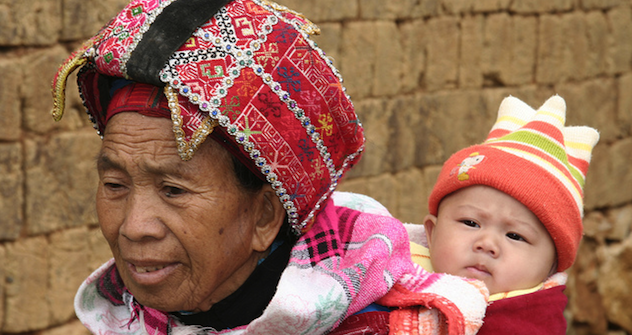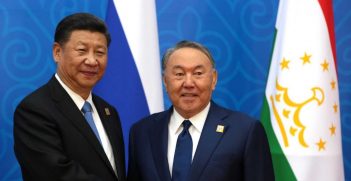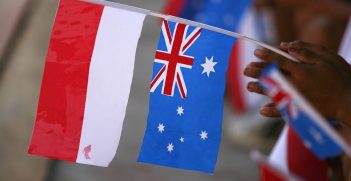China’s Hmong Go Uncounted

The Hmong, an ethnic group which comprises 3 million people scattered across China, are not formally recognised by the government and suffer from poor access to health services and low-quality education.
In recent years Uyghur and Tibetan issues have captured most of the national and international attention granted to China’s minorities. Yet Uyghurs and Tibetans account for less than 15 per cent of China’s minority population of about 113 million. How have other large minority groups, such as the Hmong, fared politically, economically, and socially in the last decade? How well do the Chinese leadership’s strategies and policies address ethnic minority challenges?
Overall, there is a clear gap between what is promised and what is provided to the less demanding minorities.
At a highly anticipated conference on ethnic affairs in the fall of 2014, President Xi Jinping emphasised that the Regional Ethnic Autonomy Law (1984) remains the cornerstone of China’s ethnic policies. On paper, this law conforms closely to international human rights standards, guaranteeing numerous rights to minorities. They include self-government within designated areas, non-discriminatory rights, proportional representation, linguistic, cultural and religious rights, and the power to adapt central directives to local conditions.
China has 152 ethnic autonomous areas, including five autonomous regions, 30 autonomous prefectures and 117 autonomous counties, and more than 1090 ethnic townships. China’s household registration system records around 70 per cent of the total ethnic minority population as resident in one of these autonomous areas.
Top Chinese leaders have also stressed that the government has undertaken a series of ‘successful’ programs and affirmative action initiatives for minorities in the past 30 years. For example, minorities have gained such privileges as partial exemptions from the one-child policy and preferential admission to institutions of higher education. They have also increased their representation in the National People’s Congress, the government and the Chinese Communist Party (CCP).
The conference outlined two ways to further reduce ethnic discontent: economic development through increased investment in minority areas and a deeper campaign of ‘patriotic’ education. This simple solution proposed by Xi’s administration to ensure social harmony and prevent ethnic conflicts has been seen time and time again since the founding of the People’s Republic of China.
But though China legally protects the distinctiveness and rights of ethnic minorities, many observers argue that legitimate representation, protection, and autonomy have yet to be achieved in practice. There are several key reasons why the Regional Ethnic Autonomy Law has been inadequately implemented.
First, while the law requires that the government head of an autonomous area be a member of the minority that exercises autonomy, this requirement has not been applied to the CCP leadership. The government head of the autonomous area reports to a party secretary, who is not necessarily a member of the ethnic minority but who exercises the main decision-making power in the region.
Second, the law specifies clearly that the interests of the state as a whole have precedence over the interests of any individual, minority or nationality. The authority of the National People’s Congress in autonomous areas is thus limited to the drafting of regulations, which must support the country’s unity and respect the Chinese constitution, and also require approval from higher-level institutions.
Third, the government holds to its firm stance that China is composed of 56 official nationalities. The implication is that no other nationalities could ever be recognised, a stance reiterated at the 2014 conference. With a population of approximately three million people scattered throughout the rural areas of Sichuan, Guizhou and Yunnan, the Hmong of China is one of the larger ethno-linguistic groups that have not been officially recognised as a nationality.
This omission may seem surprising since the Hmong are not only numerous but one of the few Chinese ethnic groups that has an extensive population living in countries outside of China. They are recognised as an ethnic minority by many countries, including Thailand, Laos, Vietnam and the United States.
In China the Hmong have been lumped into the Miao nationality, together with other ethnic groups linked more or less linguistically and historically to each other. Yet the Hmong have their own language, which is mostly unintelligible to other Miao. Despite this, there is little hope of official recognition among Chinese Hmong, whether by choice or because they sense the unwillingness of the government to reconsider its minority classification.
A growing number of Hmong seem to fully embrace the Miao identity in their relations with other Chinese and the state. Indeed, according to many Hmong elites, the fact that the Miao nationality is the fifth largest ‘nationality’ of China – with a population of over nine million – entitles them to a more favourable national status than would otherwise be the case.
In comparison with Uyghurs and Tibetans, discontent among the Hmong population has not led to a secession movement. Overall, the Hmong’s level of discontent is relatively low and comparable to that among rural Han Chinese. Their main criticisms are the lack of economic development within their areas, poor access to health services and low-quality education. The Hmong are still among the poorest and the least educated minorities in China.
In spite of their low socioeconomic status, the Hmong have not yet politically expressed a desire for self-governance. Throughout history they have never been united politically, which partially explains their lack of territorial ambitions. Furthermore, in most of the around 150 Hmong areas that are currently designated as Miao townships or autonomous areas, they coexist with other nationalities, complicating minority-related decisions.
The Hmong’s main struggle involves the protection and the promotion of their own language and culture. The linguistic issues are twofold. Firstly, Hmong have rarely had access to government services in their own language, even though this is guaranteed by law. Therefore, with a Chinese illiteracy rate among the highest in the nation, Hmong of the older generations are de facto excluded from political and administrative spheres. Secondly, with a few exceptions, the Hmong language has not been used in primary and middle schools in Hmong areas. As a result, use of the language is declining among the young.
In the broader context of Southwest China, these linguistic issues demonstrate the differential application of China’s ethnic policies. While Beijing guarantees language and cultural rights for minorities that jeopardise national security, it often disregards these rights for less organised or less threatening minorities. Southwest China’s minorities also have yet to experience the right to self-governance or the opportunity to develop their territories. For now, better access to a quality education seems to be the only available means to improve their situation.
Sebastien Carrier is Senior Programme Manager at Stepping Stones China. This article appeared in the most recent edition of the East Asia Forum Quarterly, ‘Asia’s Minorities‘. This article was originally published in The East Asia Forum on 20 May 2015. It is republished with permission.




